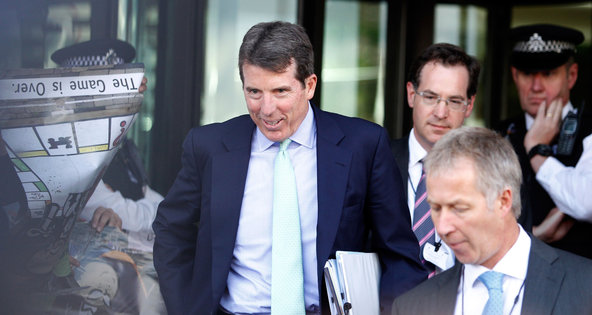Anticipating that standard, Canadian oil companies have embarked on a race to develop cleaner technologies that will make their production less damaging to the environment.
From improving valves to revamping giant boilers to exploring the storage of excess carbon deep underground, the companies are spending roughly $1 billion a year as they search for a breakthrough.
“We read the newspapers every day and we know what everyone is thinking,” said Harbir S. Chhina, an executive vice president for Cenovus Energy, Canada’s fourth-largest oil company. “The status quo is unacceptable.”
It is a tall order, since production of synthetic fuels made from oil sands creates substantially more greenhouse gas emissions than gasoline made from conventional oil, arousing assertions that the United States cannot be serious about controlling global warming if it gives Canada an export outlet for the oil. What’s more, the solutions that are being tried are probably decades from widespread adoption.
“There is a huge amount at stake for the oil companies,” said Amy Myers Jaffe, executive director for energy and sustainability at the University of California, Davis. “To the extent that they reduce the carbon intensity of the oil sands, they will have an easier time finding approval for pipelines. But if it’s just greenwashing, they are going to have an unproducible asset.”
The efforts are one part of an industrywide campaign chasing a coveted prize: winning the Obama administration’s approval for the proposed pipeline extension that would put more Canadian oil in American gas tanks.
Here amid the jack pines and white spruce of the great boreal forest, Cenovus Energy, for example, is testing towering boilers capable of recycling brackish wastewater and exhaust gas fumes to save energy and reduce air pollution. Cenovus is trying out a miniature rig that can be helicoptered in piece by piece to minimize the carving of boggy forests with service roads.
Canadian Natural Resources, an oil company, is preparing a pilot project that will pour carbon dioxide and wasted heat from its oil sands operations into giant tanks of algae that will generate a biofuel that could be used for jet planes.
Shell Canada, with financial help from the Canadian government, is planning a commercial-scale carbon capture and storage project to bury roughly a million tons a year of carbon dioxide at an oil sands processing plant.
“Oil sands are important and we need to make them wanted,” said Stale Tungesvik, president of the Canadian subsidiary of Statoil, the Norwegian oil giant. “Perception is reality.”
For the oil companies, the reality is that oil sands are arousing demonstrations against them around the United States and Europe, as well as in Canada, especially on the west coast, where outlets for eventual export to Asia must be found.
An Obama administration decision on the Keystone XL pipeline is expected in the next several months, after more than two years of delays, and even an approval would then probably be resisted in American courts. The proposed pipeline extension would carry roughly 800,000 barrels a day and help enable the Canadian industry to more than double oil sands production by 2030.
Canada has the world’s third-largest oil reserves after Venezuela and Saudi Arabia, but most of them are found in bitumen, a gooey mix of clay, sand and crude oil that must be strip mined or steamed and pumped out of the ground. Producing fuel from bitumen is expensive and uses a lot of energy, meaning that oil companies need to know they have secure markets or they will look elsewhere to explore.

